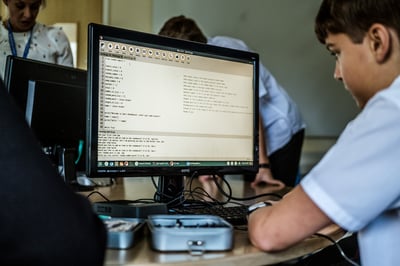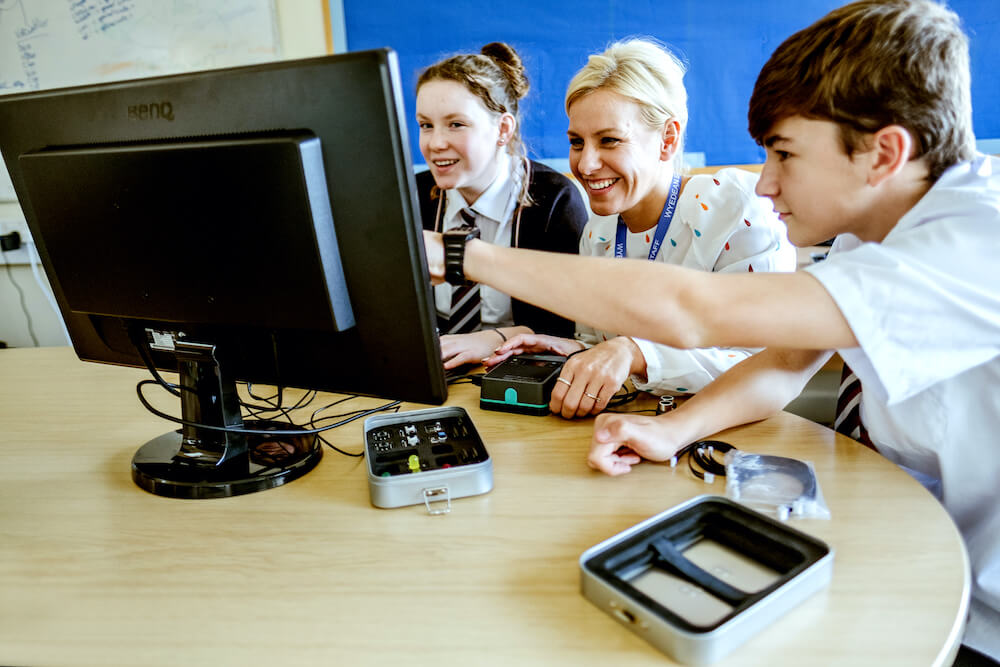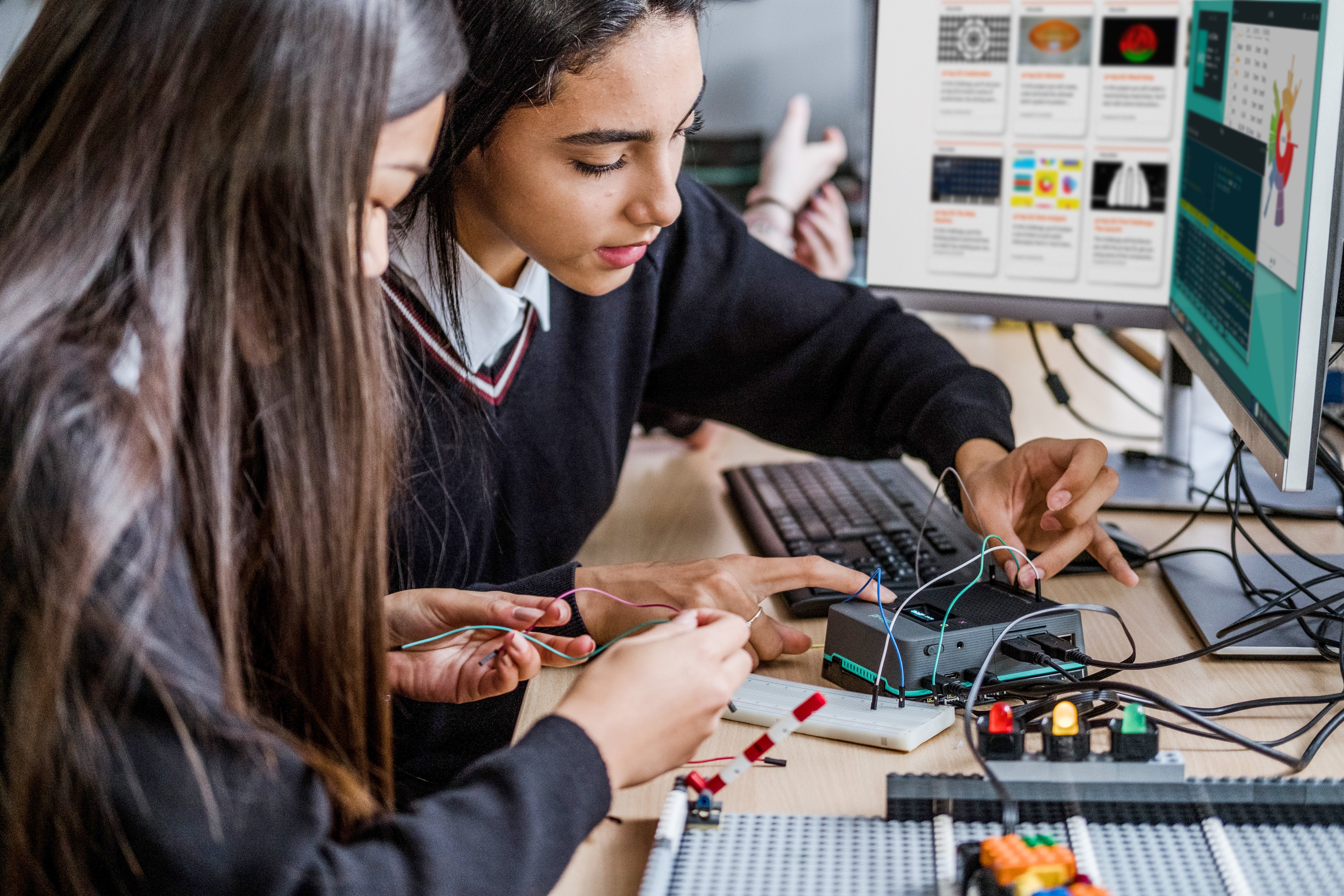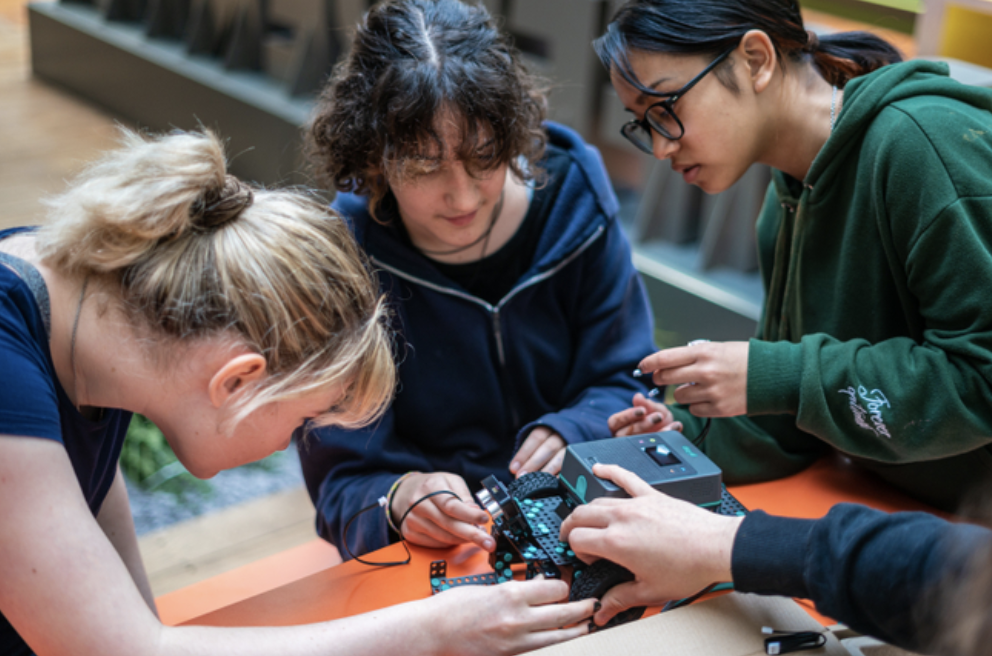In 2022, few aspects of our lives are free from the impact of technology, and while access to it in the classroom has become widely available, the skills necessary to fully adapt to technology must be learned.
Teachers are responsible for preparing students for jobs that don’t even exist yet. Nearly every career path our students go down will require some element of technology expertise and most of them will require a level of knowledge that current classroom teachers probably won’t possess in their lifetimes.
Just like the responsibility of teaching core learning standards has been carried by the entire faculty, the responsibility of computer science education is a cross curricular skill that should have equal importance.
 Where to Start When it Comes to Computer Science in Mainstream Classrooms
Where to Start When it Comes to Computer Science in Mainstream Classrooms
As a teacher, you have spent years becoming a master of your subject area. Regardless of how much technology you use in the classroom, it can be burdensome to try to integrate technology skills into your tried and true lesson plans. You may feel uncomfortable with the fact that your students are more familiar with technology than you are, wondering 'how you can be expected to advance their skills'?
In all subjects, there is huge potential when teachers take on the role of learning facilitator instead of expert lecturer, applying what they know about learning pedagogy, stepping back, and letting their students take the lead.

There are a few ways that both core subject teachers can support computer science standards and computer science teachers can support core subject standards, for an interconnected educational experience that develops well-rounded, computer-savvy individuals.
Become Familiar with The Four C’s of Computer Science
A great starting point to identify the easy entry points for computer science in your classroom is by becoming familiar with the four C’s of computer science: critical thinking, communication, collaboration, and creativity.
1. Critical Thinking
Focus: Brainstorming and idea generation
Example activities: Class discussions, Written prompts, Verbal prompts
2. Communication
Focus: Writing and presenting
Example activities: Group projects, Presentations, Peer review sessions
3. Collaboration
Focus: Work together to meet a common goal
Example Activities: Independent project, Peer review sessions, Debugging exercises
4. Creativity
Focus: Problem solving
Example activities: Program design, Idea generation, Open ended projects
Engage All Types of Learners in Computer Science
You know that student engagement is a major key for learning retention. Do not assume that computers themselves are interesting to all students and that you don’t have to intentionally engage students while using them.
The above classroom activities that correlate with the 4 C’s can be used in any core subject class and, more importantly, can engage all types of learners. Using these four C’s will allow teachers to engage all types of learners. For example, visual learners tend to thrive in the area of coding, while hardware creation appeals to tactile learners.

Ensure you understand how students can benefit from assisted features such as text-to-speech, enlarged text, or dark-mode. These features, which have already been identified as necessary for some learners, may not be front and center or user friendly.
A computer science teacher’s worst nightmare is an advanced student with a knack for getting into trouble. Many students are far more advanced than us educators when it comes to technology Prepare for these students as you would in any other subject area, by having extension activities ready to go.
It is time we start to reframe our mindsets and view computer science as a way to further explore any subject you may be interested in.
A misconception surrounding computer science is that it is for those with an interest in technology. It is time we start to reframe that mindset throughout education and instead view computer science as a way to further explore any subject you may be interested in.
The best way to engage all learners is through project based learning where groups can explore computer science in a way that makes sense to them.

How to Integrate Computer Science Skills within other Core Competencies
- Civics
In a civics classroom, data can allow students to use computational thinking to better understand the social world and reflect on their own experiences. Going beyond the collection of data and looking at the use of data and what it can mean to different perspectives allows students to practice a real-world application of critical thinking.
- English/Language Arts
English teachers can use Code with Google to have students create an interactive presentation with sound, graphics and animation to demonstrate characterization. When you consider music, film, and podcasts as pieces of literature (which they are) you can introduce a whole world of industry tools to allow students to demonstrate their understanding of the written language and communication as a whole.
- Science
Science lends itself to abstractions, automation, assumptions, and analysis which can be represented using computer created models. While science-lab safety and hardware knowledge comes first, allow your young scientists to glimpse the world of 21st century science and utilize the technology that professionals use today.
- Math
Mathematics integrates well with computer science as many algorithms are the foundation of computer programming. Engineering, data analysis, and accounting are some common real-world applications of those math skills that students love to say, ‘when am I ever going to use this?’ about.
Don’t Force the Use of Computers at First
Computer science is largely focused on computational thinking. This means computer science can initially be explored offline through problem solving with algorithms, which are simply a set of rules. This can be done by having students create a particular sequence within the context of whatever subject they might be learning in.
In an English Language Arts class, students may look into the methods and lenses of mass and targeted communication before diving into the computer science of how those systems actually work.
Allowing yourself to get comfortable is the first step to introducing computer science in the classroom. With older students, you may even gain valuable insights from them for how to integrate technology.
Regardless of if you are an ELAR teacher looking to offer more career-readiness or a computer science teacher looking to support those core, tested subjects, technology has become deeply integrated into our everyday lives, let’s allow that to be reflected in our classrooms and in our students’ education.
.png)
